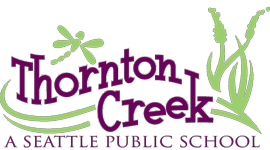Resources for Tech, Mental Health and More

Resources for Tech, Mental Health and More
Technology Assistance
Here are some resources for families to access internet services. If you are not eligible for the services listed below and need help getting internet access please contact Thornton Creek’s Social Worker Channon Agor chagor@seattleschools.org.
- Comcast Xfinity – Affordable Connectivity Program (ACP) – Internet Essentials $9.95 per month. Apply through Comcast Xfinity. Please check to see if your family is eligible for free Internet services before applying.
- T-Mobile Project 10 Million – Offering 10 million eligible households free hotspots with 100GBs of mobile data every year for five years. Applications must be submitted online for Project 10 Million.
The City of Seattle offers information about their Affordable Connectivity Program
Mental Health Support Services
Please be aware that this is not a comprehensive list of providers in the area; this includes organizations Seattle Public Schools have MOUs currently with. Students and families are not required to obtain services from these organizations.
LGBTQ+ Services
This is not a comprehensive list of LGBQT+ support systems in our area. Please feel free to obtain services from organizations not indicated on our District website.
Meal Support
Beyond the Thornton Creek Pantry, please find food resources in our area at the University Food Bank, North Helpline , and Family Works.
SEL Learning Tips
- Rest – Finding time and ways to rest can help us reduce stress, decompress, and rejuvenate ourselves. Defining what rest means for us is important so that we know we are getting what our mind, body, and soul need. Reading, moving our bodies, or time in nature are all examples of things that can give us respite from the hectic nature of our work. Finding what works for us is what matters. Let’s try and prioritize rest when we can as we all deserve time to unplug. Resting our minds and bodies is something we deserve always. And while it may or may not be feasible to carve out extended time for us to rest, recognizing that rest serves our well-being places value on ourselves and is a great model to those around us.
- Nurture Relationships – Finding time to connect with loved ones is always beneficial to our social, emotional, and mental health. Being fully present, free from distractions, can be a wonderful way to focus on nurturing relationships when we are together. Planning fun activities, taking a walk with someone, or even carving time out for an overdue phone call are all examples of tending to our relationships. Also, let’s not forget to nurture the relationship we have with ourselves. Taking some “me time” to pause and reflect on our wants, needs, and goals can be an act of self-love.
- Find Joy – We all don’t get the privilege to truly unwind and “take off” from our duties. But, when we practice identifying inner and outer practices that make us feel good, we can intentionally weave in moments of joy. Let’s think about the things that really bring us joy and try and commit to doing as many things as time permits which light up our lives. Maybe it’s finally starting a new show, going to a movie, reading for fun, practicing a hobby, cooking, writing, game nights, etc. The possibilities are endless! And let’s not confine our fun, either. We can fit in playfulness into so many spaces, so let’s ease our spirits if we can and find the fun even during the small moments.
- Post-Break Tips / Adults – Finding ways to engage in habits that feel good for us should not be confined to days away. Committing to things that are healthy for us can be derailed by what can feel like an abrupt transition “back to reality.” But our reality SHOULD include everyday acts and perspectives which prioritize our well-being. Let’s set up a balanced life so that we aren’t waiting for the next break and instead build a lifestyle where time for ourselves is embedded. Planning ahead to ease ourselves back into the school routine can help mitigate stressors and prepare ourselves for those first few days.
- Post-Break Tips / Students – During breaks from school, not all students find themselves excited. While many look forward to time away from school, many do not. Some young people may have increased feelings of loneliness, stress, and an overall strain on their mental health. This can be a painful time and we want to be sure to be supportive when we return to ease our students back into environments where we can work to help them feel emotionally safe. Let’s welcome students back with warmth and enthusiasm. We may want to revisit our classroom norms, procedures, and expectations. Structure can provide many with a sense of safety and stability, but we also want to do this gently. Finding time to reconnect with students, and foster connection between them centers relationships and builds community.
